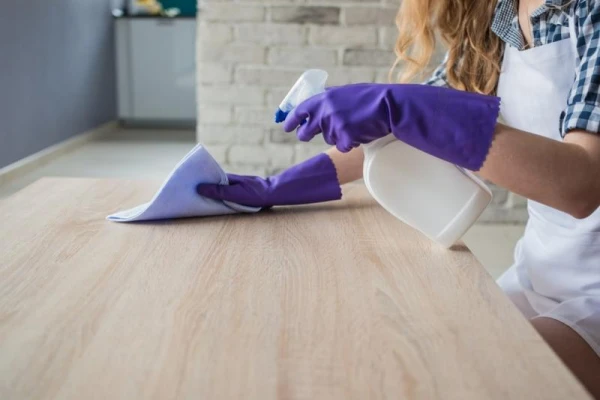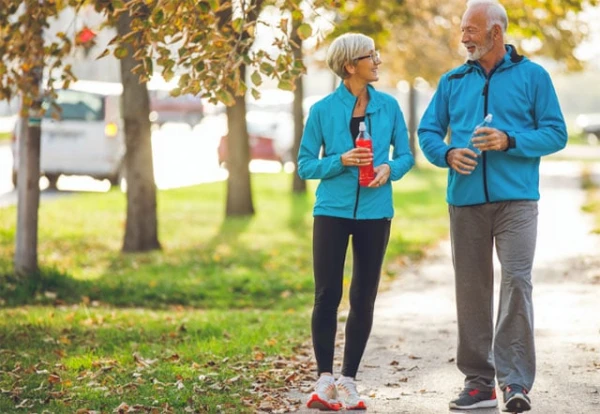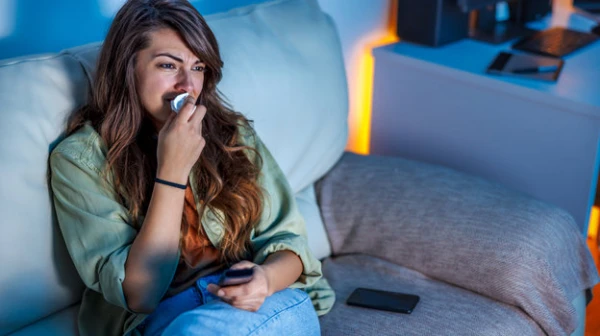
Hydrogen peroxide serves as an inexpensive yet effective multi-purpose disinfectant. Just mix one part hydrogen peroxide with one part water, spray it on bacteria-infected surfaces, wait five minutes, and then wipe clean. Here are some things you can clean with this solution in your home.
Carpets, Rugs, and Upholstery
Hydrogen peroxide helps remove stains from fabrics that can be found throughout the home. Start by testing an inconspicuous area on the carpet or upholstery, then apply the same method as you would for treating clothing. For an extra boost in stain removal effectiveness on carpets, you can mix hydrogen peroxide with dish soap or steam clean.
Houseplants
If your favorite houseplants are affected by fungus (such as root rot) or pests, spray the affected areas with a mixture of one part hydrogen peroxide and three to four parts water. You can also clean your pruning tools with hydrogen peroxide to disinfect them and prevent the spread of disease from plant to plant.
Stains on Clothing
Instead of using a laundry stain remover, hydrogen peroxide can act as a powerful pre-treatment for almost any stain on clothing, including wine, food, grass, and even blood stains.
First, test an inconspicuous area to ensure that the peroxide does not bleach the fabric, and once you confirm it is safe to use, apply a small amount directly to the stain. Allow the fizzing to work for a minute before blotting the area, repeating as necessary until the stain is gone. Either rinse with cold water or wash the clothing as usual.
You can also brighten dull whites without bleach by adding one cup of hydrogen peroxide to the washing machine before starting. As a bonus, it will disinfect the contents, making them look and smell fresher than before.
Bedding and Mattresses
For cleaning sheets and blankets, you can use the same method as for clothing, but hydrogen peroxide has another beneficial effect when it comes to your bed.
If you suffer from dust mite allergies, mix one part hydrogen peroxide with one part water in a spray bottle and spray the mattress to kill the pesky microscopic creatures that love to settle there. Wait until it is completely dry before making the bed with clean sheets.
Children’s Toys
Children’s toys, whether stored in bedrooms, playrooms, or garages, inevitably become covered in dirt and germs. Hydrogen peroxide is a non-toxic way to ensure cleanliness and disinfection at the same time.
If the toys are not battery-operated or do not have electronic components, soak them in a tub of equal parts hydrogen peroxide and water. Leave them for a few minutes, then rinse with clean water. If it requires batteries or needs to be charged, dampen a cloth with the solution and thoroughly wipe the toy, avoiding sensitive parts.
Fresh Produce
You’ve probably heard of the method of using baking soda to wash fruits and vegetables. But did you know that hydrogen peroxide can be used as a substitute? Soaking produce in a 1:4 ratio of hydrogen peroxide to water for 30 minutes (or less for more delicate items like leafy greens) not only removes harmful substances like dirt and pesticides but also extends their freshness.
Trash Cans
The day after you take out the trash, spray the inside of the trash cans with a mixture of hydrogen peroxide and water. Let them air dry — preferably in the sun — so they are clean, odor-free, and ready for fresh bags.
Cosmetics, First Aid, and Hygiene Products
Prevent the spread of bacteria by regularly cleaning makeup brushes, tweezers, thermometers, manicure tools, loofahs, and more by soaking or wiping them with hydrogen peroxide. You can also easily disinfect your toothbrush and retainer (without spending a fortune on a UV sanitizer) by soaking them for a few minutes in hydrogen peroxide and rinsing thoroughly before reuse.
Sponges
There are several ways to clean a kitchen sponge, whether it’s bleach, vinegar, microwave, or dishwasher. And if you have hydrogen peroxide on hand, you can also add it to the list. Weekly, soak sponges in a bowl of 50% hydrogen peroxide and 50% water for about ten to twenty minutes to kill lingering bacteria. Rinse the sponge and let it air dry before using it again.
Mirrors and Glass
Want to find an economical and natural way to clean windows, mirrors, and glass surfaces throughout your home? Just spray them with hydrogen peroxide and wipe with a lint-free cloth (or crumpled newspaper if you have some lying around). You’ll be left with a smooth shine without the use of chemicals.














Leave a comment